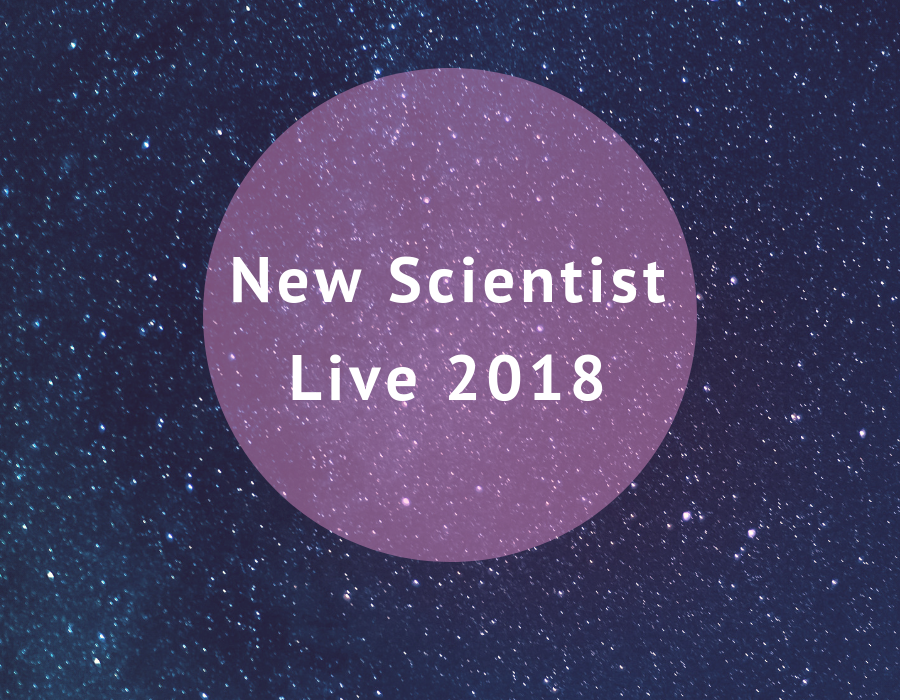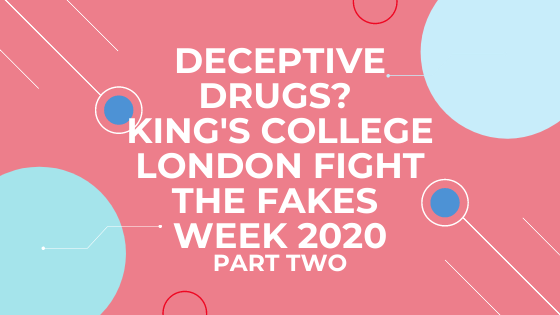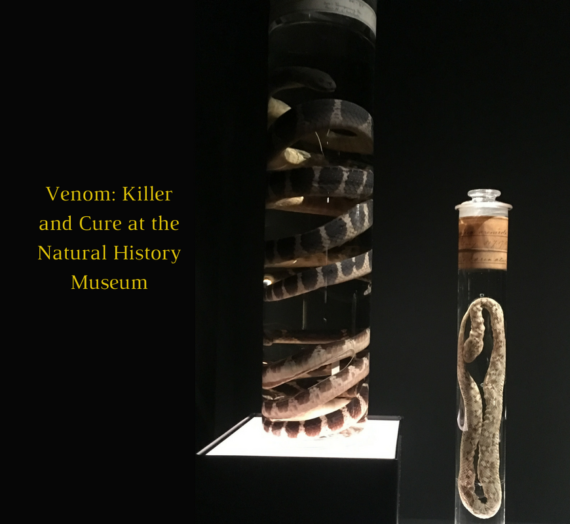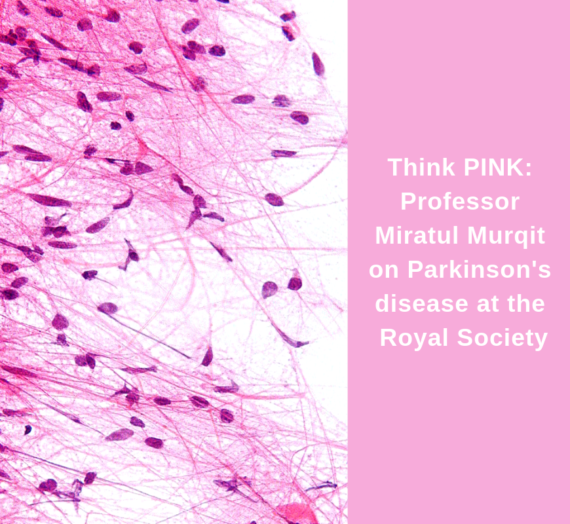Roisin Conneely and Arzo Iqbal
This weekend, Arzo and Roisin were lucky enough to attend New Scientist Live at the Excel Centre in London. Marketed as a “mind-blowing festival of ideas”, the four day event brings together hundreds of exhibitors and speakers spread across five different “zones”; Cosmos, Earth, Humans, Technology and Engineering. Carry on reading to discover our highlights and more about the interesting people we met.
When we first arrived at the Excel, we were surprised at the amount of children and young people visiting, a really encouraging sign for the future of science. Getting young children interested in science is crucial and it’s great to see so many kids excited about science and being given the message that science is for everyone, including them!
 We attended a talk at the Earth Stage from Emily G. Mitchell, a palaeontologist from the University of Cambridge. Her research focuses on Ediacaran organisms, the earliest known “complex” creatures. She began her talk by giving an overview of the different types of fossils that can be discovered, from trace fossils such as dinosaur footprints which can reveal how different species interacted, rarer fossils with soft tissues preserved, and the elusive and difficult-to-process microfossils. Up until 600 million years ago, all life on Earth was pretty simple, Emily explained, and then a turning point illustrates how organisms were becoming multicellular and more complex. She also talked about the difficulty in proving whether a fossil is actually showing what you think its showing, for example, the 590 million year old Doushantuo formation, appearing to show fossilised embryos, which would suggest the appearance of complex life with sexual reproduction. However, it’s difficult to prove that these are not actually something else, for example, fossilised giant sulphur bacteria. Emily talked more about her own research using quantitative analyses to map the life stratefies and histories of organisms, for example, looking at clusters of animals and examining the variation between them. An interesting example she gave was that of the Fractofusus, whose reproductive strategies can be examined by reconstruction and spatial maps to demonstrate that there was variation between, but not within clusters of the species within a particular area, suggesting a mixture of sexual reproduction (to create the variation in the first place) and cloning (accounting for the lack of variation within clusters). Read more on her work here.
We attended a talk at the Earth Stage from Emily G. Mitchell, a palaeontologist from the University of Cambridge. Her research focuses on Ediacaran organisms, the earliest known “complex” creatures. She began her talk by giving an overview of the different types of fossils that can be discovered, from trace fossils such as dinosaur footprints which can reveal how different species interacted, rarer fossils with soft tissues preserved, and the elusive and difficult-to-process microfossils. Up until 600 million years ago, all life on Earth was pretty simple, Emily explained, and then a turning point illustrates how organisms were becoming multicellular and more complex. She also talked about the difficulty in proving whether a fossil is actually showing what you think its showing, for example, the 590 million year old Doushantuo formation, appearing to show fossilised embryos, which would suggest the appearance of complex life with sexual reproduction. However, it’s difficult to prove that these are not actually something else, for example, fossilised giant sulphur bacteria. Emily talked more about her own research using quantitative analyses to map the life stratefies and histories of organisms, for example, looking at clusters of animals and examining the variation between them. An interesting example she gave was that of the Fractofusus, whose reproductive strategies can be examined by reconstruction and spatial maps to demonstrate that there was variation between, but not within clusters of the species within a particular area, suggesting a mixture of sexual reproduction (to create the variation in the first place) and cloning (accounting for the lack of variation within clusters). Read more on her work here.
We also heard a talk from Peter Campbell, head of Cancer, Ageing and Somatic Mutation at the Wellcome Sanger Institute. He gave an engaging and simple overview of cancer and how it forms, as well as revealing how the secrets to understanding the disease further may lie in our DNA. Interestingly, the cost of examining cancer genetics is getting cheaper and easier, as Peter explained how, in 2001 when the human genome was first elucidated, the process took 10 years and cost £1 billion, and the first cancer genome sequence in 2009 cost £100,000 and took two years. Now, however, cancer genomes can be processed for £500 in a matter of weeks, and this is set to become even cheaper. This means that in the near future, each cancer patient will have their cancer genomes sequenced, routinely, as part of their treatment.
 Peter also explained how “knowledge banks” containing genetic and clinical data are being created to aid in diagnostics and treatment for cancer. Doctors will be able to compare patients to others with a similar “profile” in terms of genetics, disease severity and other factors, in order to predict possible outcomes, and select treatments which may be the most successful for them. He also warned however, that as new chemotherapy drugs are being developed to block certain mutations found in cancer, cancer cells can become resistant, much like how bacteria can become antibiotic-resistant, hence this is a major challenge that researchers will need to study further. Find out more about Peter’s research here.
Peter also explained how “knowledge banks” containing genetic and clinical data are being created to aid in diagnostics and treatment for cancer. Doctors will be able to compare patients to others with a similar “profile” in terms of genetics, disease severity and other factors, in order to predict possible outcomes, and select treatments which may be the most successful for them. He also warned however, that as new chemotherapy drugs are being developed to block certain mutations found in cancer, cancer cells can become resistant, much like how bacteria can become antibiotic-resistant, hence this is a major challenge that researchers will need to study further. Find out more about Peter’s research here.
As science bloggers, we’re obviously quite big sci-fi fans, so we were excited to talk to the team behind Cellarius, a novel, collaborative storytelling experience in which users can create their own characters and plotlines within a fictional, near-future universe where artificial intelligence has taken over. The team also told us about a programme they’re supporting which teaches coding to girls in Afghanistan, who they’ve also recruited to come up with some plotlines for the Cellarius narrative. Find out more at https://cellarius.network/
Another interesting team we met was the makers of the Happy Sun app, which uses satellite data to monitor UV radiation levels and tell users how long they can stay outside in the sun safely. Users can also personalise the app to produce tailored advice about how much sunscreen to apply and other precautions to take. A simple idea, but one that is very much needed, with skin cancer rates expected to increase by 7% by 2035 in the UK, it’s about time we started taking sun protection seriously, and if this free app can help with that, then we’re all for it. More details can be found at http://www.happysun.co.uk/
Amongst the several university and research based exhibitors, we were pleased to see lots of merchandisers selling environmentally friendly goods, including those selling eco-friendly glitter, reusable bottles, and even jewellery made from recycled plastics; an encouraging sign that businesses are taking the environment seriously and striving to reduce waste.
Overall, if you’re thinking of visiting New Scientist Live next year, we would definitely recommend it, just make sure to get there early to make the most of your time there!
Don’t forget to subscribe to our blog so you don’t miss any future posts, and follow us on Instagram and Twitter too!




